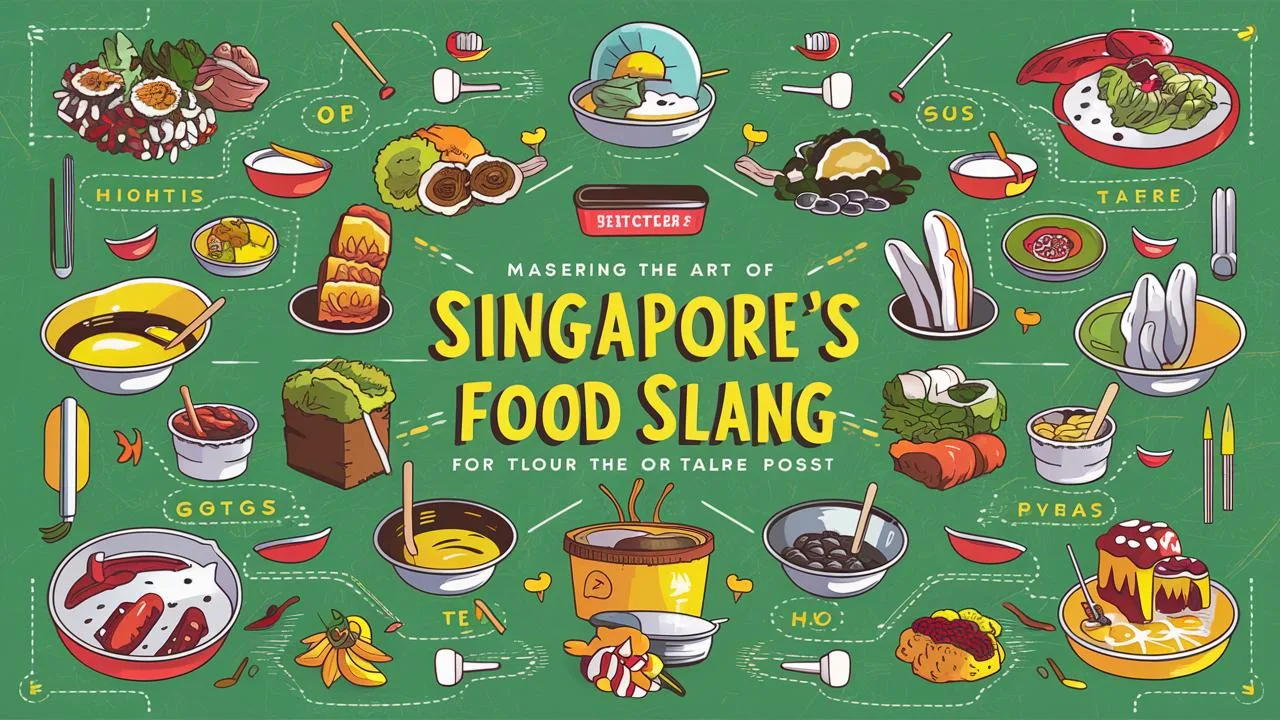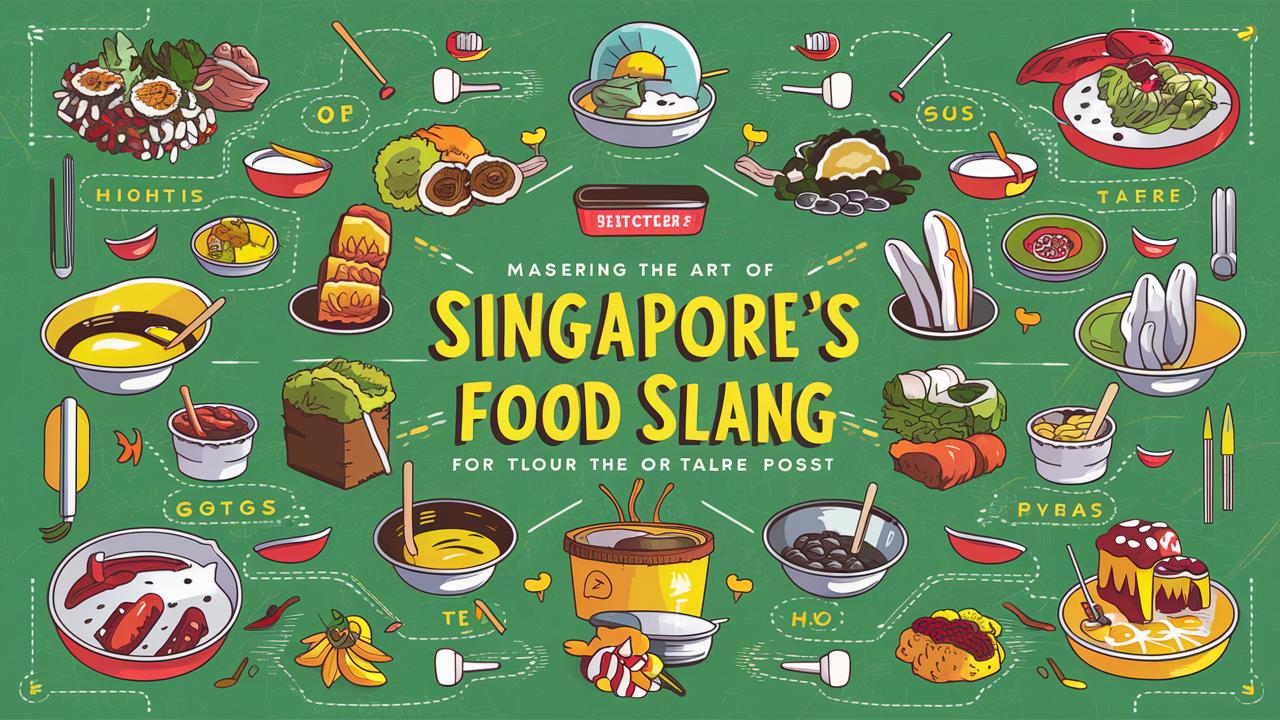Are there any online resources to learn more about Singaporean food slang?
Welcome to the tantalizing world of Singapore’s food slang! If you’ve ever found yourself scratching your head at terms like “makan,” “shiok,” or “ta-bao,” you’re not alone.In a city where linguistic diversity mirrors its rich culinary landscape, understanding food slang is your ticket to unlocking a more immersive gastronomy adventure. Let’s dive into this flavorful journey and discover the colloquial phrases and cultural nuances that make dining in Singapore as spicy as its famous laksa.
The Importance of Food Slang in Singapore Culture
Singapore, often dubbed as a food paradise, offers a smorgasbord of culinary delights that reflect its cultural diversity. But amidst this gastronomic abundance lies a unique lexicon that distinguishes insiders from tourists. Knowing the local food slang not only helps in ordering your favorite dish like a pro but also connects you with the heart of Singapore’s cultural identity.
The Origins of Singapore Food Slang
Languages and Influences
Singapore’s food slang is a melting pot of Malay, Hokkien, Cantonese, Tamil, and English. This rich tapestry of languages has resulted in a unique patois known as Singlish. Each word tells a story, each phrase reveals a historical trace, and the slang used is a manifestation of centuries of cultural exchange.
The Role of Hawker Centers
Hawker centers are not just food hubs; they are the crucibles where food slang is born and bred. Here,the language of food resonates amid the sizzling sounds of woks and the chatter of people from all walks of life. Hawker culture, now a recognized UNESCO intangible cultural heritage, has played a crucial role in keeping these unique expressions alive and thriving.
Common Food-Related Slang Terms
Get ready to expand your vocabulary with these quintessential Singapore food slang terms:
- Makan: A Malay term that simply means “to eat.” When someone asks “Are you ready to makan?”, they’re likely inviting you to partake in a meal.
- Shiok: An expression of pleasure or satisfaction, particularly in relation to food. If you find that chicken rice absolutely delicious, exclaim with delight, “Shiok!”
- Ta-bao: Derived from the Cantonese term for take-away, it indicates taking food to-go. Often used in lunch queues: “Want to ta-bao or eat here?”
- Jiak Kantang: Literally translates to “eat potato” in Hokkien, a playful jab at someone who embraces Western culture and cuisine.
- Paiseh: Pronounced as “pai-say,” this is Hokkien for feeling embarrassed or shy, particularly when asked about extra helpings.
- leh, Lah, Lor: Singlish particles used at the end of sentences to convey different emotions or tones. Example: “This laksa very good lah!”
ordering Food Like a Local
Ready to impress your friends and the hawker stall uncle or aunty? Here’s how:
The Coffee Shop Lexicon
- Kopi: Coffee with sweetened condensed milk.
- Kopi-O: Black coffee with sugar.
- Kopi-C: Coffee with evaporated milk.
- Teh: The local version of customary tea.
- Teh-O: Black tea without milk.
- Gao: Added to indicate extra strong.
- Siu Dai: requests less sugar in your brew.
Hawker food Essentials
- When ordering Nasi Lemak,don’t forget to ask if you want the sambal (chili paste) “on the side leh.”
- At the Chicken rice stall, confidently say, “One set, white meat, extra rice, shiok sauce.”
- For Char Kway Teow, specify: “More cockles, kurang pedas, very shiok.” (“less spicy,very tasty”)
Food Slang in Social Media and Everyday Conversations
Food slang has transitioned seamlessly into the digital sphere,making a splash on social media platforms. Keen on garnering likes and shares? Master these expressions:
- Capture that moment with a picture of your laksa, and caption, “Laksa is life, so shiok!”
- Influencers love to say, “Had a makan sesh with my favs, all smiles!”
- Posting a review? “Nice place but a bit paiseh with the service.”
How Food Slang Enhances Cultural Understanding
Language is a gateway to culture, and food slang is no exception. These expressions offer insights into Singaporeans’ attitudes towards food—makan is not merely an act of eating, but a cherished social event. By assimilating these phrases into your day-to-day conversations, you not only widen your cultural understanding but also become part of the linguistic tapestry that is uniquely Singaporean.
Tips to Master Singapore Food Slang
- Immerse Yourself: Visit hawker centers and pay attention to how locals converse.
- Practise: Don’t be shy! Use these terms when placing your orders, locals appreciate the effort.
- Learn from Media: Watch local films or TV shows to get a better grasp of the colloquialisms.
- Engage with Locals: Make friends who can give you real-time feedback on your usage.
Conclusion
Understanding Singapore’s food slang is more then just a linguistic adventure; it’s a cultural deep dive that enriches your culinary experiences within the “Lion City.” Whether you’re a tourist, an expat, or a local, mastering these terms can transform every meal into a shiok affair. So next time you find yourself wandering through the bustling hawker centers or sipping kopi at a kopitiam, try sprinkling some of these flavorful expressions into your conversation. You’ll not only enjoy your meal more but will felt connected to the Singapore soul.


